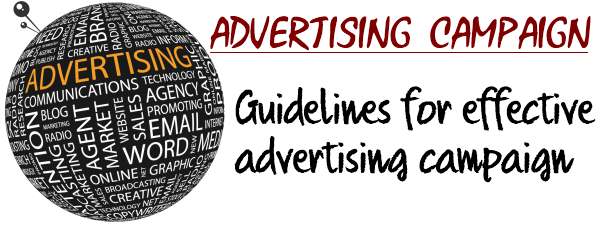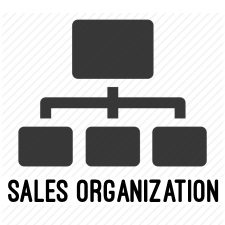Guidelines for Effective Advertising Campaign
Table of Contents
Guidelines for effective advertising campaign
When creating an advertising campaign, there are many factors which decide if the message your company wants to promote is effective and eventually comes across.

A campaign can fail for many reasons, but in order to establish whether or not the ad was designed properly, you need to consider several parameters which are quite standard and can help you evaluate your ad/commercial when you create your own campaigns or if you need to assess the work of external parties such as a freelancer or an advertising agency.
This summary presents some basic questions which you should ask yourself when analyzing a promotional campaign.
These questions can be used to evaluate a visual campaign like print or online ads or simply a website copy, a landing page or a commercial.
You can even try and come up with a table which you can fill out every time you try to evaluate your own or someone’s work.
The fundamentals
As soon as you find yourself analyzing an ad or a commercial you need to ask yourself some initial questions:
- What was the purpose of the ad? (inform about a new product/product line, generate awareness for a new company, retain existing customers, acquire new customers, inform about a specific new offer, force repeat purchase, foster loyalty, re-branding/re-positioning…)
- Was the purpose clear?
- Did the ad generate attention?
- Did you find it interesting?
- Do you think the ad per se was memorable?
- Did you find it entertaining or even amusing? Was that necessary?
- What emotions/colors/atmosphere did the ad/commercial convey?
- Does the atmosphere reflect the image the company has?
- Did the campaign address specific needs or pains? Which ones?
- Did the campaign generate desire for the particular solution presented? Or at least, did it make you feel like you needed to know more about the company or the product/service presented?
Trigger/Call to action: Did the ad specify what to do next? (Example: go to a specific website, call a specific number, go to a store, order some vouchers, subscribe a newsletter, profit from discounts, buy a specific product, download an article/ebook…)
Endorsers: were any endorsers involved in the ad/commercial?
If so: were these people suitable for the commercial?/Were they somehow connected to the product/service? Did they mirror the message conveyed in the ad? Did the commercial turn into a promotion for the endorser instead of the product? Does the image of the endorser reflect the values of the company?
Advanced Parameters
After answering some initial, basic questions, it is time to concentrate on more specific parameters which define a well-designed promotion.
1. Weight: did the ad manage to represent some intangible/abstract ideas through senses?
2. Harmony: did all the elements of the ad operate toward a single key message?
3. Entanglement: was the product/service the main character of the ad? Removing or substituting the product would dramatically change the whole ad?
4. Engagement: did the ad create clear images? Did it make you think, wonder, participate?
5. Leveraged attention: was the ad/commercial focusing on the product for the entire ad/a large part of it/a tiny portion of it? Was is enough? Was the short air time/attention span of the audience used wisely?
6. Narrative: Was there a story? Was it easy to follow? Was it pertinent? Was it necessary?
7. Focus: Does the commercial aim at promoting the product/service depicted or does it promote the agency which worked on the ad?
8. Claim: What is the claim? Does it reflect the values of the company, the spirit of the product and the actual product design? Is it reasonable and believable or is it exaggerated/deceiving/ridiculous?
9. Values: What value(s) are being conveyed? Can you identify a clear value proposition? Are rational benefits/advantages directly or indirectly explained through the ad?
10. Positioning: Is the positioning clear? Can you immediately identify who the ad is addressing and why the product/service advertised could actually be beneficial for them?
11. Production: Does it look like an expensive or cheap production? Was it innovative? Does the way the ad/commercial was produced affect (by positively supporting or negatively mining) the whole message?
Conclusions
Once you create a proper table with each single point presented in this summary, you should be able to quickly look at a campaign and identify potential issues.
The idea, of course, is that not only must the ad be designed correctly: In order to be successful, a promotional campaign must also be connected to an excellent product and to a company with a good reputation and image.
Additionally, time and place also play an extremely important role: the message must be delivered through the right channels (where you can address your target group) and at the right time within the decision making process of the potential customer.
Lots of things to work on!
But the good news is that if you have a good company, a good product a great message delivered at the right time/place to the right people. Your campaign will definitely be successful.

